Ok – I’ve not written much about the food so far. My travel blog posts somehow usually feature some discussion about food. I guess this is because I believe that when I travel, eating is a part of the overall experience. We are sensual creatures – we use all of our senses, including our experience of food. So I’ll just put a little bit about food today.
Here at the Notre Dame of Jerusalem Center, we have breakfast included each morning. One of the neat things I’ve never seen anywhere else is being able to eat raw honey from the comb. They have a rack where they pull out a comb from a hive and just set it in with bowls below it to catch the dripping honey. It is true that this is the land of Milk and Honey. I can’t drink the milk, but the honey is the best I’ve ever had. It is a pretty awesome topping to put on oatmeal.

Today’s part of the tour focused on the mountains around Jerusalem. The first was the Mount of Olives. This was a place frequented by Jesus on His way to and from Jerusalem. It is not a very big area, so when we know that Jesus did something on this mountain, we can be pretty sure it was in the local vicinity – we can’t be too far off on our assumptions of exactly where it happened. As a faithful Jew, Jesus would travel from His home to Jerusalem at least 3 times each year for the various festivals and would enter by coming over the Mount of Olives. From the top of the Mount of Olives, you can see Jerusalem right across the valley and it is a pretty short walk to Jerusalem from the Mount of Olives.
Our first stop on the Mount of Olives was the Church of the Ascension. This ancient Byzantine church was taken over by the Muslims and is now a small mosque. In the center of the building is a stone in the floor. This stone is said to be the place where Jesus ascended to heaven. Tradition says that He left a footprint behind in the rock. Both Muslims and Christians believe that Jesus will come down in the way He ascended, so this is a very Holy site with future expectations for the second coming of Christ.



Just down the road, still at the top of the Mount of Olives, is the Pater Noster church – the “Our Father” church. Jesus and His disciples spent a lot of time in this area and it is believed that Jesus taught His disciples how to pray the Our Father here before carrying that teaching to the rest of the world. When you walk in, you find the Our Father in hundreds of different languages on the walls. I also found it in Braille.




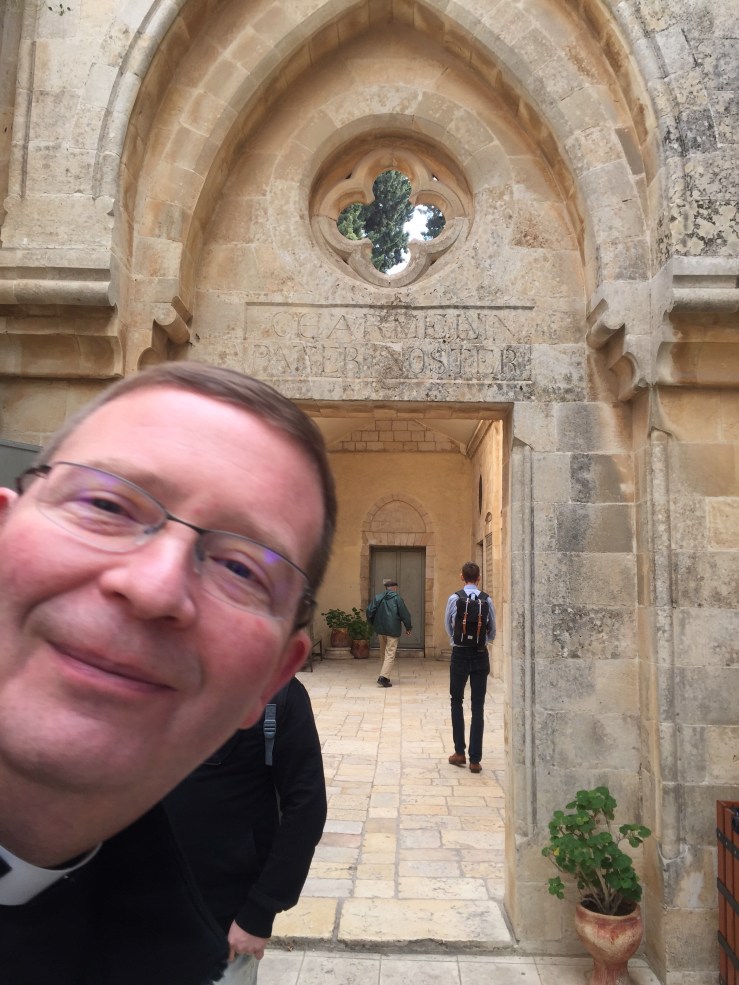
Our next adventure was to leave the Mount of Olives and walk down into the valley below to the Garden of Gethsemane. We were there last night for a Holy Hour in the night. We took a traditional route that is used on Palm Sunday, although it is more likely that a route just a little farther south to avoid walking through the Jewish burial cemetery along the way.
From the top of the mount, you can see all of Jerusalem laid out. You can see the eastern wall and the double Golden Gate in the middle of the eastern wall. It is a double set of arches without doors. It is believed that when the Messiah comes, there will be an earthquake that will open these gates for Him to enter.
You can also see the Dome of the Rock and black dome of the Al-Aqsa Mosque – the two most prominent mosques in the Old City, built on top of the Jewish Temple ruins. The Al-Aqsa mosque means “The Farthest Mosque” referring to a verse in the Quran. It is the third holiest site in Islam.
As we made our journey down the mountain, we passed through a Jewish cemetery. All of these graves are set to face the Temple in Jerusalem, with the feet facing the eastern wall.


Half way down, we stopped at the Dominus Flevit church. The name means “The Lord Wept”. This is where Jesus wept over Jerusalem in Luke 19. Jesus knew that Jerusalem was to be destroyed. This happens in 70AD – 34 years after Jesus’ crucifixion and resurrection. The overlook from here is really great, too. It is about half way down the mountain.
As I was looking around the grounds of the church, I heard “Hey, Deacon Matt!” I looked up and saw one of our parish’s college students waving at me. He attends Xavier University and has a study abroad this semester here in Jerusalem. He and several classmates from Xavier were studying the Mount of Olives today as well. Being a Xavier MBA alum, I like seeing the kids all decked out in their “X-Gear”. Talk about a small world – I’ve seen two Lexington people in 24 hours here, half way around the world.


Poor Mr. Hamster couldn’t resist checking out the cactus in the courtyard.



Leaving the Dominus Flevit, we continued through the Jewish Cemetery. Graves as far as the eye can see. When Joshua led the people across the Jordan into the Promised Land, 12 men picked up stones to carry to remember the crossing. Today, you see stones on the graves to serve as remembrance of the loved ones.
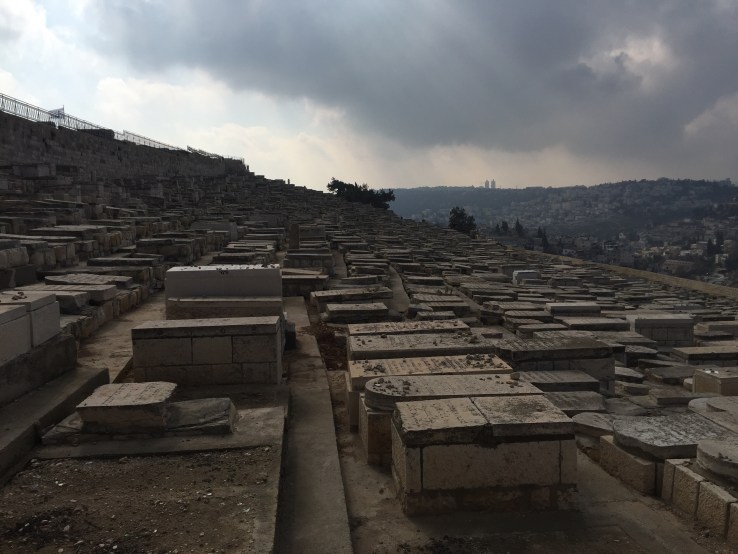

At the bottom, we arrived back in the garden of Gethsemane. In the daylight, you get a better feel for how small the garden of olive trees is. Since we had been inside the church already yesterday, we moved along. We walked about 2 minutes farther south to the place where the rest of the disciples were while Peter, James, and John waited in the garden as Jesus prayed before His passion.

Next stop: lunch. We started with hummus and some other traditional foods with pita. Then onto the main course. There is a traditional dish whose translated name means “Upside Down”. Basically you sauté up cauliflower and eggplant, then put a bunch of seasoned rice on top. After it cooks for a little while to make the vegetables soft, you serve it by tipping the entire pot upside down and then scooping it onto plates. We each had a serving of “Upside Down” along with a generous serving of roasted chicken. It was delicious. Some fried dough with honey was desert.



After lunch, our next stop was the hill country of Judea, specifically the house of Zechariah: the place where Elizabeth lived when Mary went to visit her. Luke Chapter 1 tells the story. Mary visits Elizabeth when both are pregnant. Mary with Jesus, Elizabeth with John the Baptist. To get there, we had to climb a very long staircase – I’d guess 1/4-1/2 mile long to get to the top.
At the top is a church built on the site of one of Zechariah’s homes. We had a beautiful mass inside the church. Next to the church is another chapel with artwork depicting the visitation of Mary to Elizabeth.
This encounter is where the Church receives the prayer called “Canticle of Mary” or “Magnificat”, detailed in Luke 1:46-55. The Magnificat is prayed as part of the Evening hour of prayer in the Church’s Liturgy of the Hours:
My soul proclaims the greatness of the Lord; my sprit rejoices in God my savior. For hea has looked upon his handmaid’s lowliness; behold from now on will all ages call me blessed. The Mighty One has done great things for me, and holy is his name. His mercy is from age to age to those who fear him. He has shown might with his arm, dispersed the arrogant of mind and heart. He has thrown down the rulers from their throws but lifted up the lowly. THe hungry he has filled with good things; the rich he has sent away empty. He has helped Israel his servant, remembering his mercy, according to his promise to our fathers, to Abraham and to his descendants forever.
Our next stop was to go back down the mountain and enter the town at the bottom to where John the Baptist was born.

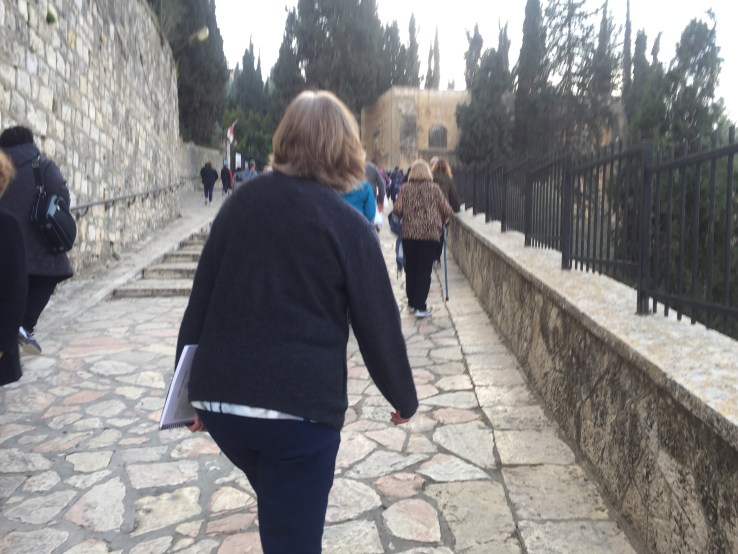





This area of Judea doesn’t seem very religious. For the most part, everyone we saw were young people enjoying the nightlife of the local cafes.
The church of St. John the Baptist has a small grotto in it where it is believed that John the Baptist was born.






In Luke’s Gospel, we hear about how Zechariah was struck mute for 9 months because he did not believe God could bring him a child. After John’s birth, the Lord opens Zechariah’s mouth again and Zechariah gives us “The Canticle of Zechariah” (see Luke 1:67-9). This Canticle is used by the Church for the morning hour of prayer every day in the Liturgy of the Hours. It is one of my favorite pieces of scripture.
Upon returning to the Notre Dame Center, we were treated to a great presentation on the Shroud of Turin by a local scholar. There is a permanent exhibit here on the shroud. I’ve been very interested in the shroud for many years but I learned some new things tonight. It is amazing what modern investigative techniques have brought to our understanding over the last 20 years. If you’re not familiar with the Shroud, it is believed to be the burial cloth covering the body of Jesus after His death.
Modern photography techniques and 3D analysis and rendering have provided amazing understanding of the man who was buried in this cloth. All of the evidence continues to strongly point to Christ, including pollen, flowers, the wounds consistent with the type of death He endured, and so on. I was particularly impressed with the analysis of the wounds from the scourging and crucifixion.





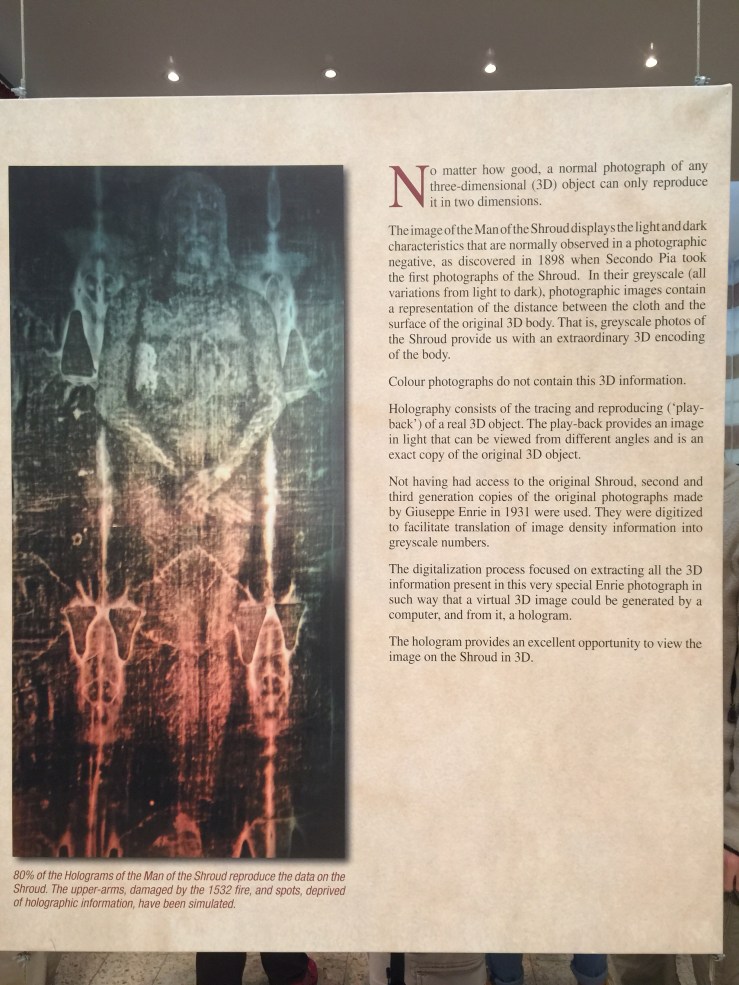

Here’s an example of the kinds of whip they believe were used on Jesus. They had little bar-bells on the end.
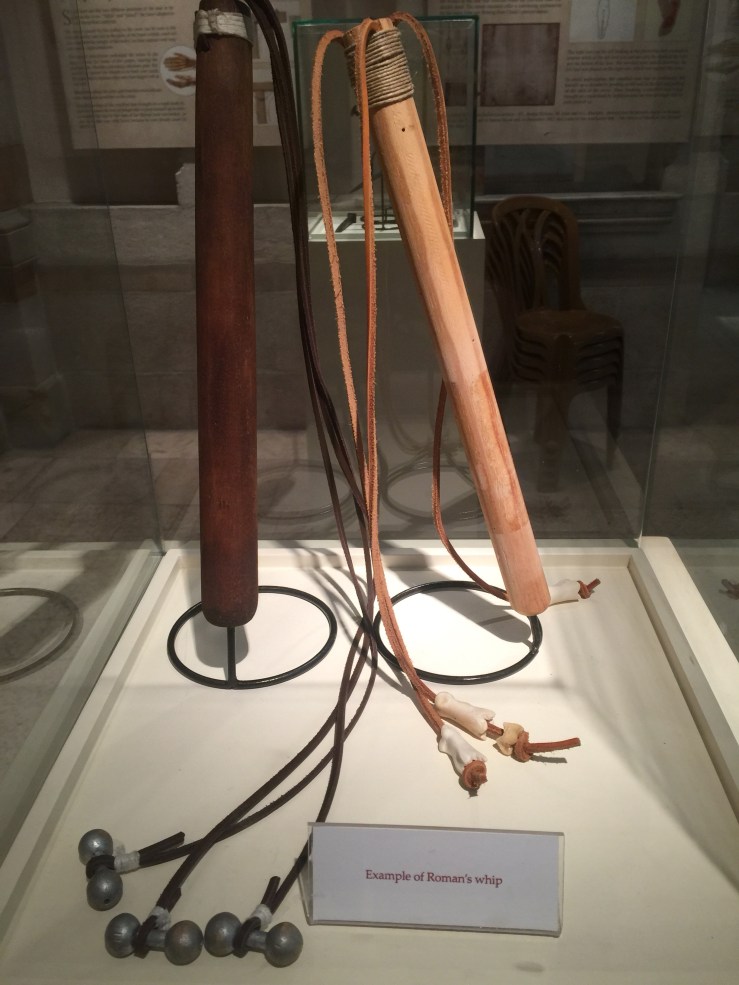
After the presentation, we returned to the dining room for a light supper and some fellowship.


The Notre Dame center has a gorgeous chapel on the 1st floor. I stopped in and prayed my evening Liturgy of the Hours before retiring to get my blog done.
Time for bed. Next stop: Bethlehem tomorrow.
Peace!
– Deacon Matt

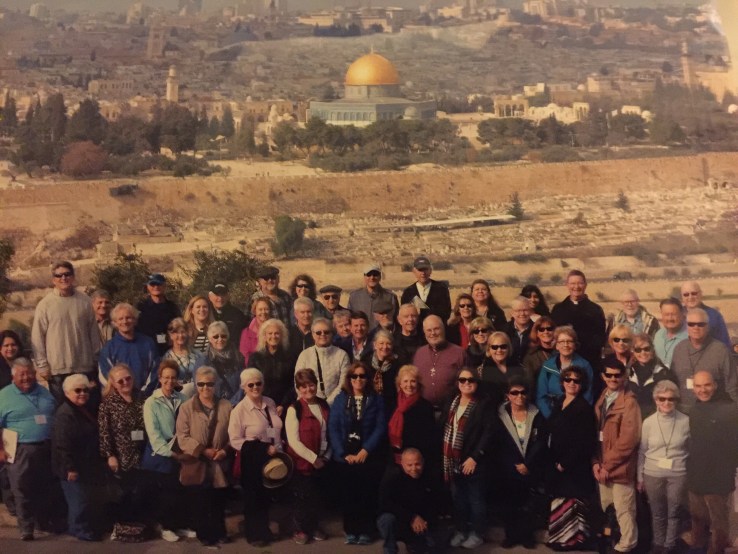

Thank you again, Matt!
[…] Israel Day 3: The Mountains of Jerusalem […]
“Has He, victoriously,
Burst from the vaulted
Grave, and ail-gloriously
Now sits exalted ?
Is He, in glow of birth,
Rapture creative near ?
Ah ! to the woe of earth
Still are we native here.
We, His aspiring
Followers, Him we miss ;
Weeping, desiring.
Master, Thy bliss …”